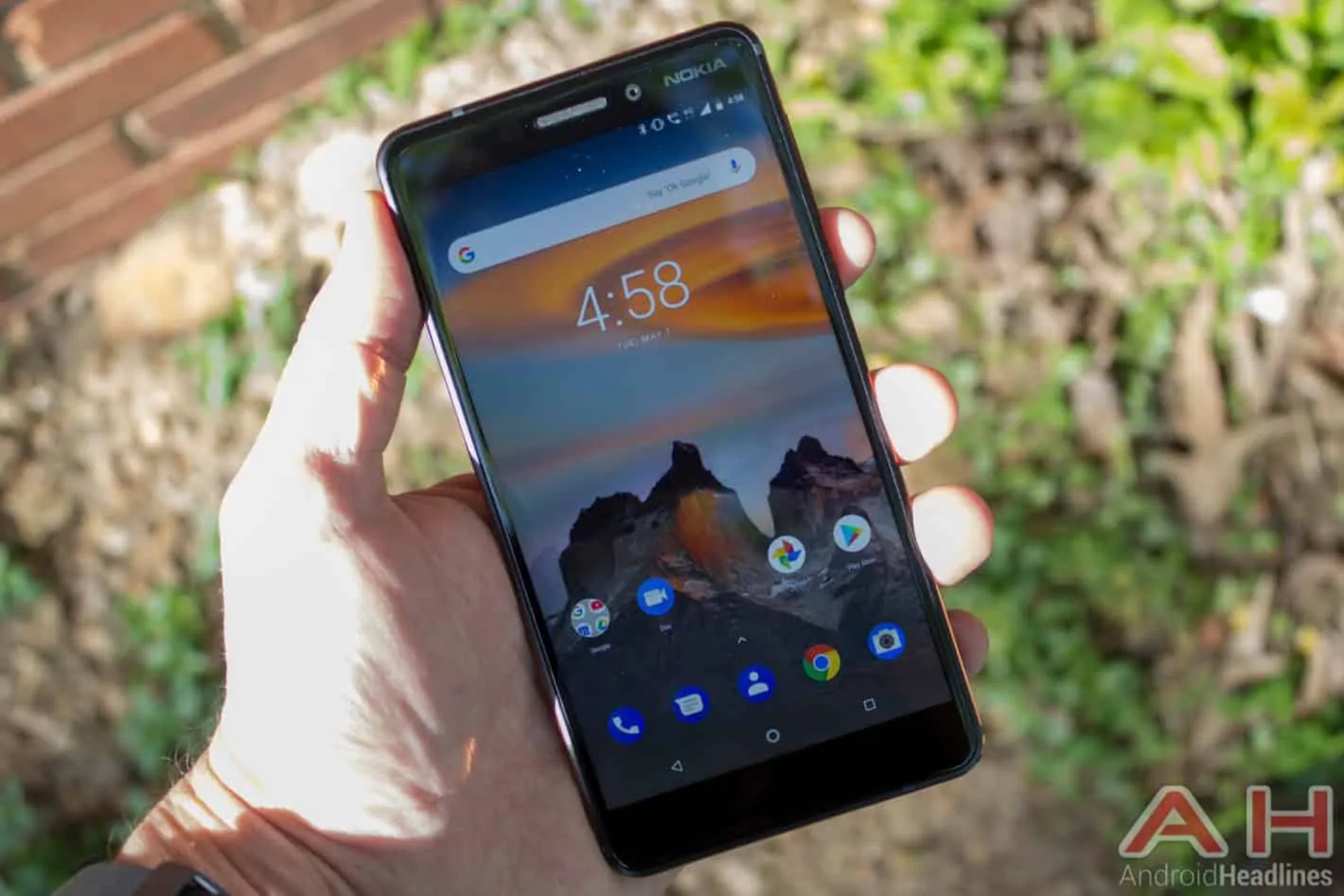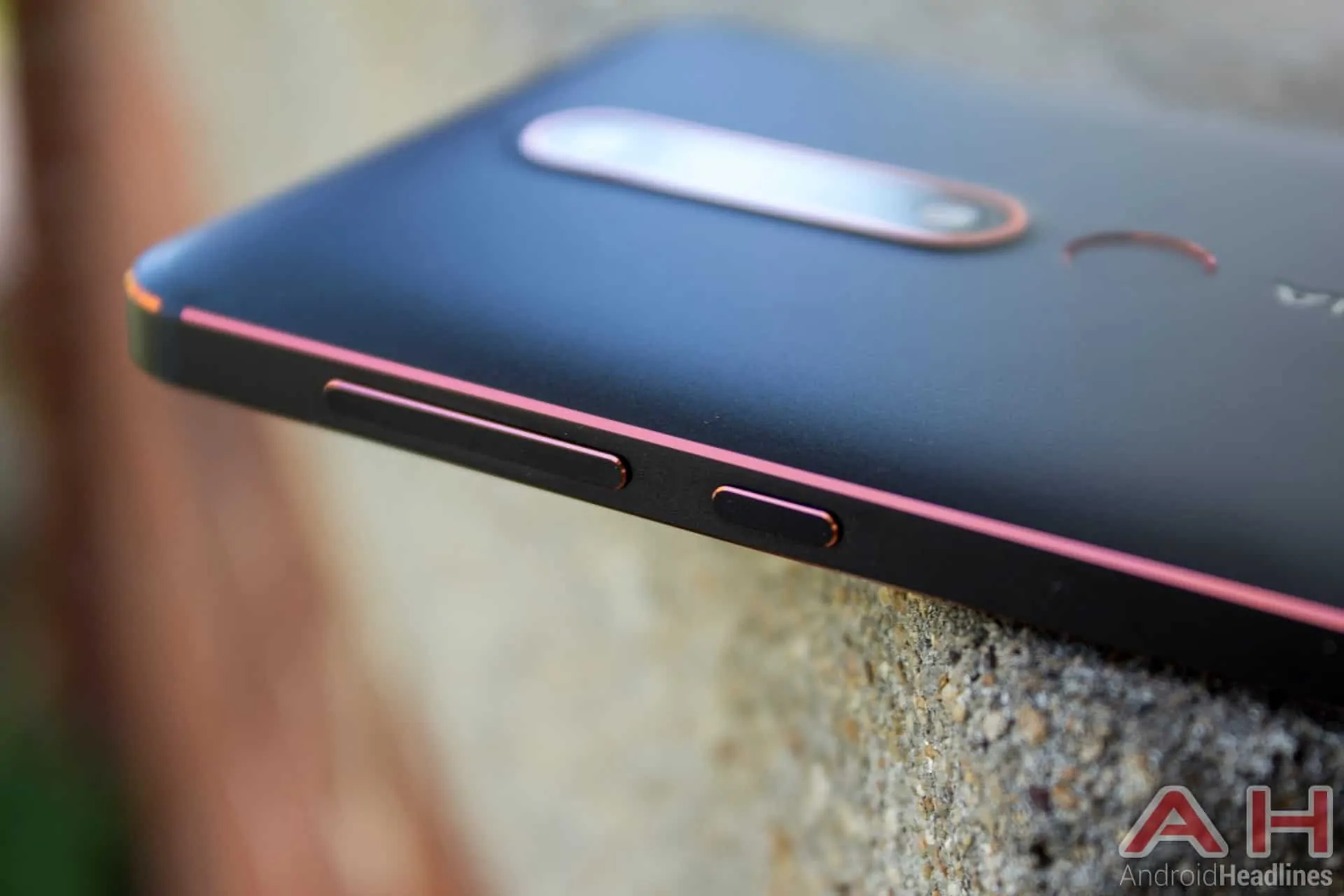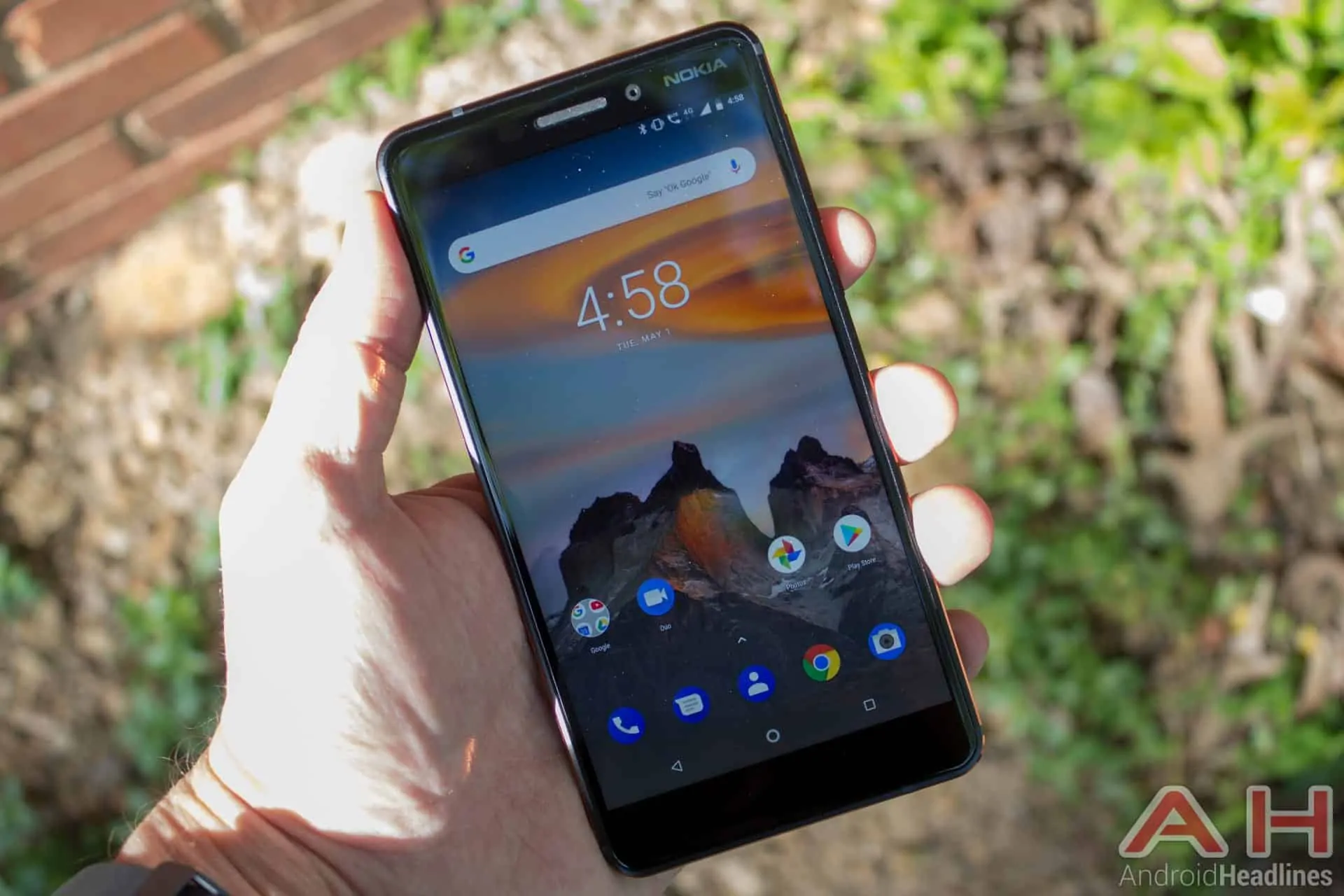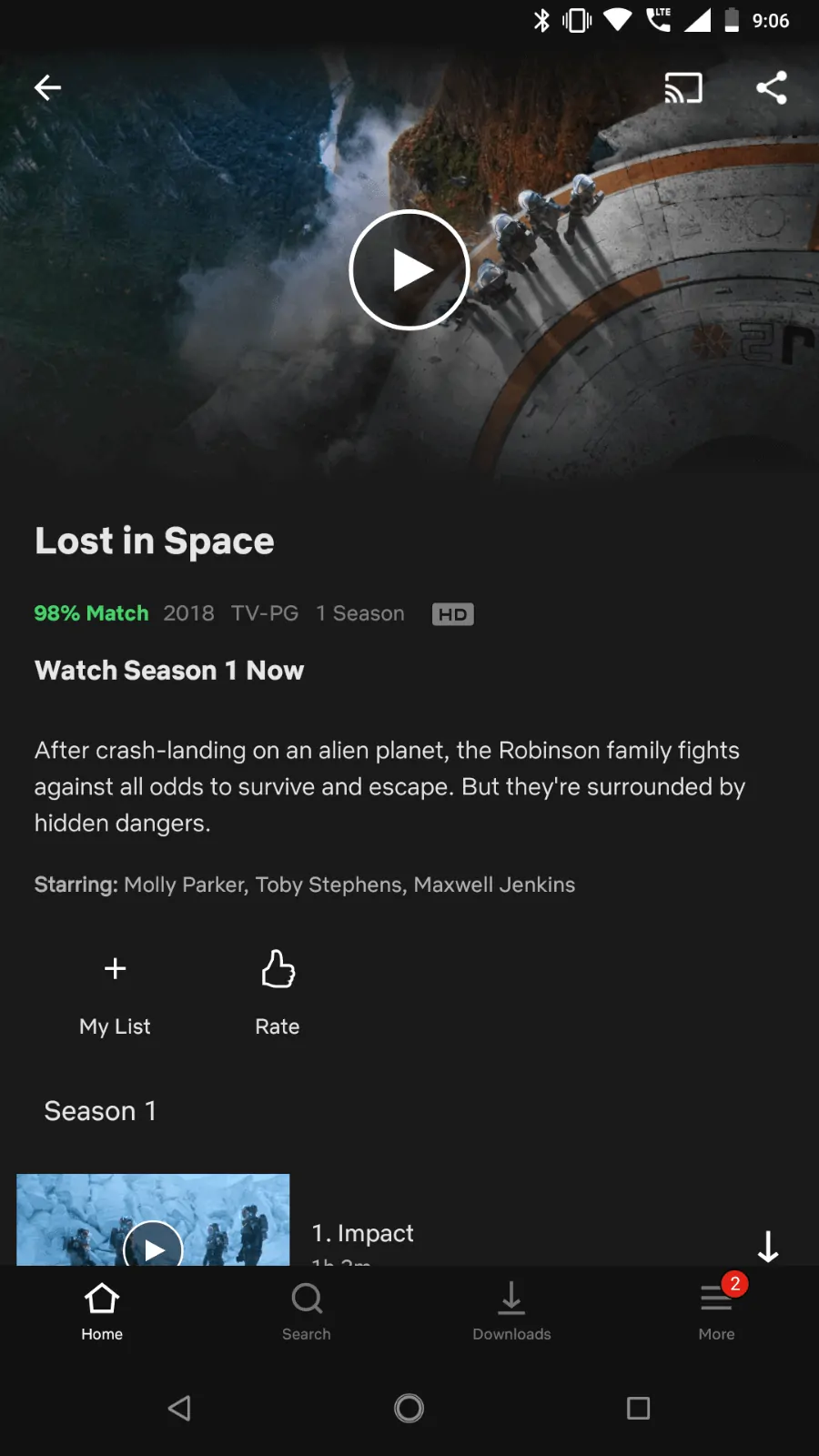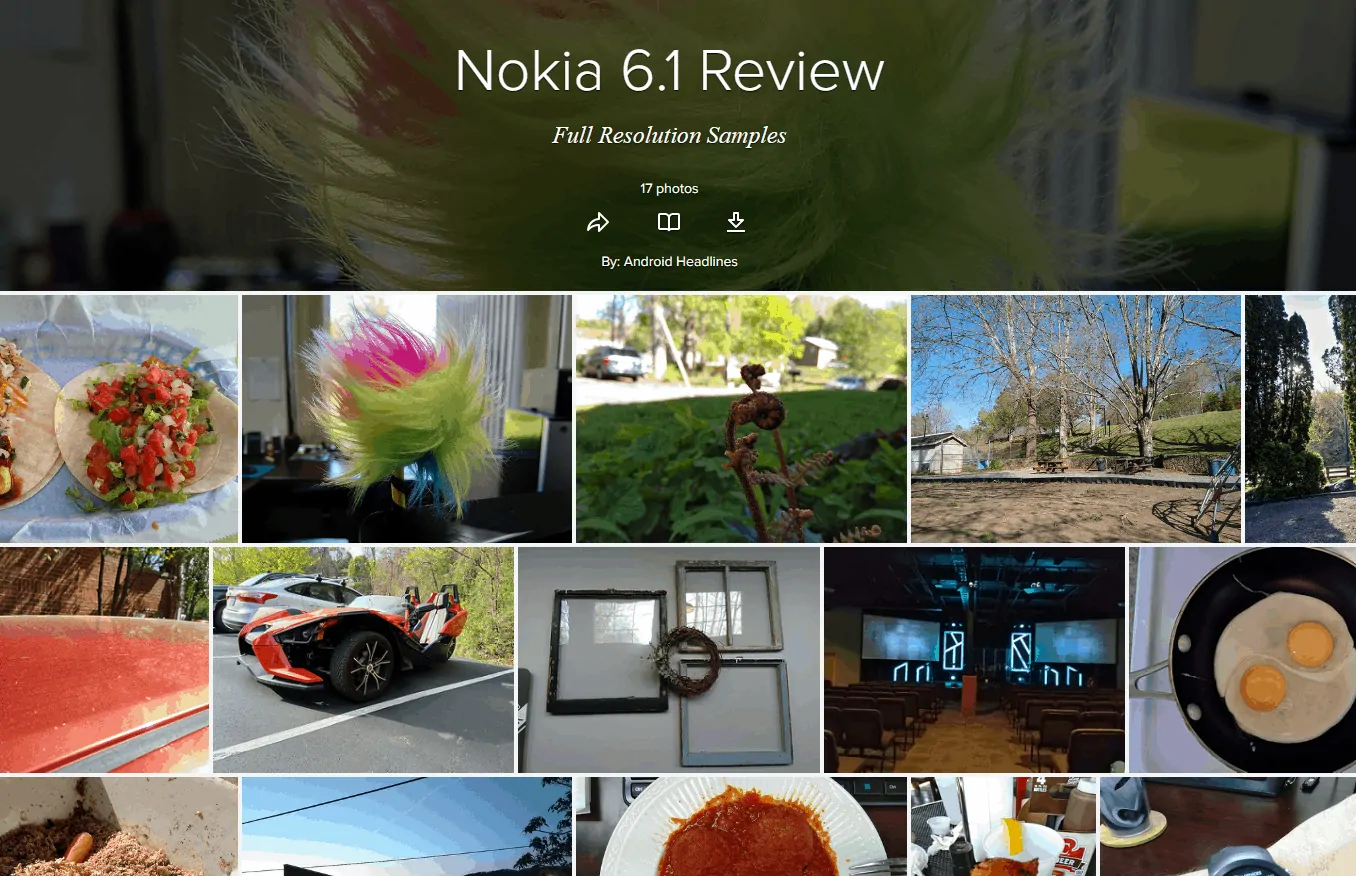Classy Design meets Ease of Use
Nokia’s grand entrance into the world of Android started last year, mostly to some pretty positive praise. 2018 is ushering in a new wave of phones from HMD Global, the manufacturer behind Nokia’s Android-powered devices, and the Nokia 6.1, in particular, looks to keep a similar pricing schedule with some pretty significantly upgraded internals, as well as an updated exterior design.
Video Review
Specs and What’s Included

At $269, the Nokia 6.1 is roughly $90 more than the Nokia 6 was last year when it sold on Amazon, but with that higher price comes some significantly upgraded internals. Sporting a brand new coat of paint; black with copper trim, the Nokia 6.1 looks simply gorgeous in its series 6000 aluminum chassis. It’s been upgraded to a USB Type-C port on the bottom, with USB 2.0 speeds, and still retains the 3.5mm audio jack up top. Up front is a 5.5-inch 1080p IPS LCD screen with reduced bezels when compared to last year’s Nokia 6. Inside is an upgraded Qualcomm Snapdragon 630 SoC with 3GB of RAM alongside 32GB of internal storage.
MicroSD card support is available, taking up the second nano-SIM slot in the dual-SIM card tray. A non-removable 3,000mAh battery sits inside, and the device sports NFC, Bluetooth 5.0, and dual-band WiFi radios up to 802.11ac speeds. On the front is an 8-megapixel camera with (f/2.0 aperture, 1.12um pixel size). Around back is a 16-megapixel camera (1.0um pixel size, f/2.0 aperture, PDAF) with Carl Zeiss lens, dual-tone LED flash and proper binaural audio recording via two microphones, giving proper spatial stereo audio to videos recorded from the phone. The phone measures 148.8mm high, 75.8m wide and 8.6mm thin, weighing 172 grams.
The Nokia 6.1 package is pretty light when it comes to extras, as there are virtually no pack-ins for this more budget-minded phone. Aside from the phone itself, you’ll find a SIM tray eject tool, USB Type-A to Type-C cable, and a 5v/3a wall charger to quick charge the phone. Since the phone has a 3.5mm jack built in there’s no need for a dongle adapter, and there’s no case or headphones packed in, but that’s not uncommon for this price tier in particular.
Hardware and Display

At first glance, the Nokia 6.1 looks identical to its 2017 counterpart, the Nokia 6. It features the same overall looks, angles and design language, but Nokia has cleaned up the front and shrunk the bezels from the previous year. The biggest hardware change is the move from a front-facing fingerprint scanner to a rear-mounted one, in turn removing the capacitive keys that last year’s device had in favor of software navigation buttons. Nokia has been able to shrink the overall height of the phone, making it almost 6mm shorter than last year’s device, thus making it a little more comfortable to hold overall. Due to the fact that Nokia is still using a display with a 16:9 aspect ratio, the phone feels wider than many other phones nowadays which use a taller 18:9 aspect ratio, giving those phones the ability to make a screen with the same diagonal measurements while coming in physically thinner.
Like last year the Nokia 6.1 is made from ultra-sturdy and premium feeling series 6000 aluminum, with a unibody construction all the way around. Antenna lines are cut near the top and bottom of the backside, with small lines scattered around the sides as well. The copper chamfered edges are simply gorgeous, giving the phone a high-brow look that’s classy and sophisticated. Metal phones still have a special feel to them that glass just can’t give, and while many premium phones now ship with glass bodies, the hard cut metal on the Nokia 6.1 remains more premium feeling than many of those devices. It’s also a nice solid weight without feeling heavy, but the camera hump makes it wobble when placed down on a table.
The 5.5-inch display is above average in quality, sporting good black levels, good contrast levels, and good brightness levels. It’s easily viewable outdoors, but in direct sunlight is a bit on the dim side, however, the coating on the screen keeps reflections at a minimum, in turn enhancing the viewability over sheer brightness levels. Color balance is a bit on the cool side, and pixel persistence/ghosting could be a bit better, but neither are overly offensive or off. Colors aren’t oversaturated and tend to look fairly realistic, but again have a bit of a cool hue to them. Viewing angles are good, with dimming at angles but no visible color shifting and black levels are average for an LCD and are further degraded when viewing at any angle. Nokia supports Android’s built-in breathing notifications, turning the screen on to display notifications in white text on a black background, but they don’t serve quite the same purpose as they would on an OLED screen.
Performance and Benchmarks

Performance overall might be the single biggest upgrade between the 2017 and 2018 Nokia 6 models, and it’s mainly thanks to the significantly upgraded horsepower in the chipset. Last year’s phone was powered by a Snapdragon 430, which is not exactly the most capable chipset in the industry. Qualcomm’s Snapdragon 630 is a much better choice for a phone with a 1080p resolution screen, and really any phone that can truly consider itself a “smartphone” in most regards. This doesn’t mean the Nokia 6.1 has flagship-levels of performance, but it’s more than usable in every situation we’ve tested, and it’s certainly good for the under $300 price category.
The Nokia 6.1 supports all of Android’s many ways to multi-task, including fast app switching by double tapping the square Overview button on the nav bar at the bottom, as well as running two apps at once. Android has supported split-screen apps for some time now, allowing you to run two apps simultaneously by splitting the screen in half and having different apps in each section. Android 8.0 Oreo introduced official floating window support, meaning apps that have updated to support the function will now minimize to a floating window when you navigate away from them, with the ability to resize the window and drag it elsewhere around the screen, much like a window on a desktop operating system.
Gaming performance is generally good, as it was able to handle every game we tried running on the phone, including more graphically intense games like Player Unknown Battlegrounds (PUBG) and Shadowgun Legends. The biggest issue was in performance consistency, where the game would have great framerates but suffer from stuttering and hitching throughout the experience. It’s not game-breaking, but it’s definitely annoying, and if you don’t have a high threshold for these sorts of things, you may just want to look elsewhere for a better gaming phone. See the benchmarks we ran below for comparable performance to other devices.
Connectivity, Sound and Battery Life
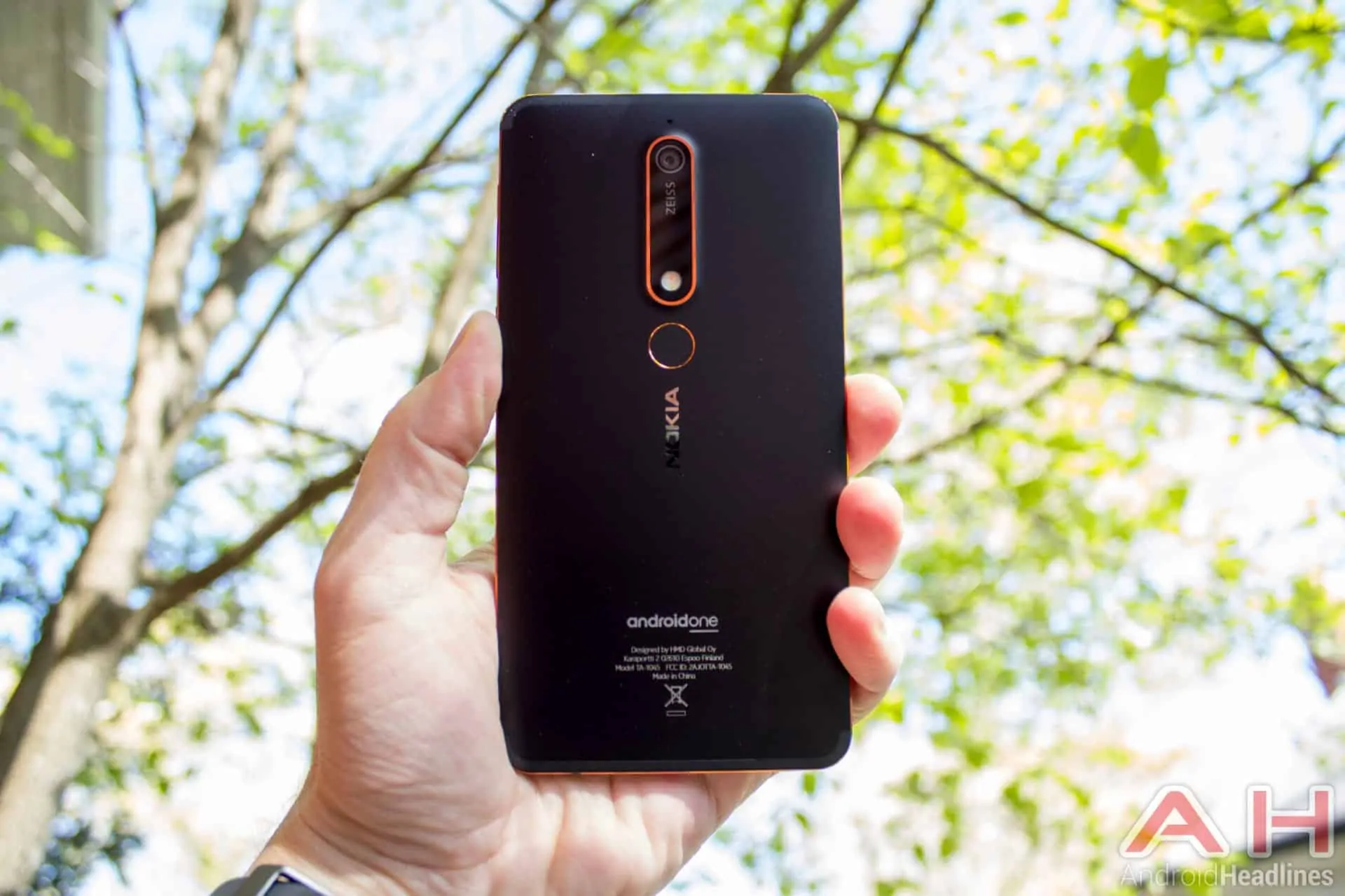
Part of the beauty of Android One’s simplicity is that it covers just about every extra you can think of when it comes to cellular network and data support. Everything is here, from Voice over LTE (VoLTE), HD audio, WiFi Calling, carrier aggregation for faster data speeds, dual SIM support and plenty of options for restricting background data when needed. About the only thing Android One doesn’t offer is granular control over whether an app uses WiFi or cellular network data; something that some skinned versions of Android do offer. Signal quality and speed was exactly what we would expect from a modern smartphone, and we had no reason to complain while using T-Mobile US’s 4G LTE network for the review. It also supports dual-band 2.4GHz and 5GHz WiFi up to 802.11 speeds.
Nokia has made the upgrade to Bluetooth 5.0, supporting peripherals with more bandwidth and a further range than before. This includes any Bluetooth peripheral, not just ones with an upgraded Bluetooth standard, and thanks to Android 8.0 Oreo, the Nokia 6.1 even supports advanced high-quality Bluetooth audio codecs like aptX, aptX HD, and LDAC, providing wireless audio fans with the best quality wireless audio available. A 3.5mm audio jack is thankfully included for maximum compatibility with existing audio peripherals, and the phone supports fully digital audio through its USB Type-C port. Speakers on the body of the phone are wholly average, with a single bottom-firing speaker that’s decent in every way, but not good or great.

Despite having a fairly large battery when compared with the lower-powered Snapdragon 630 SoC inside, battery life is average at best. The 5.5-inch IPS LCD display on the front likely draws more power than a similar sized OLED display would, as it requires the backlight to illuminate the entire surface of the display instead of being able to light individual pixels as needed. Outside of this, there doesn’t seem to be any real reason battery life wouldn’t be excellent, and in most days I snuck through the day with moderate screen on time usage without the need to top-up during the day. Heavy users will definitely need a top-up before the end of the day, but thankfully the Nokia 6.1 ships with a 5v/3a (15W) power brick that charges about 50% of the battery in half an hour. This works with variable power chargers as well up to 9v/1.8a (16W) through the USB Type-C port.
Software
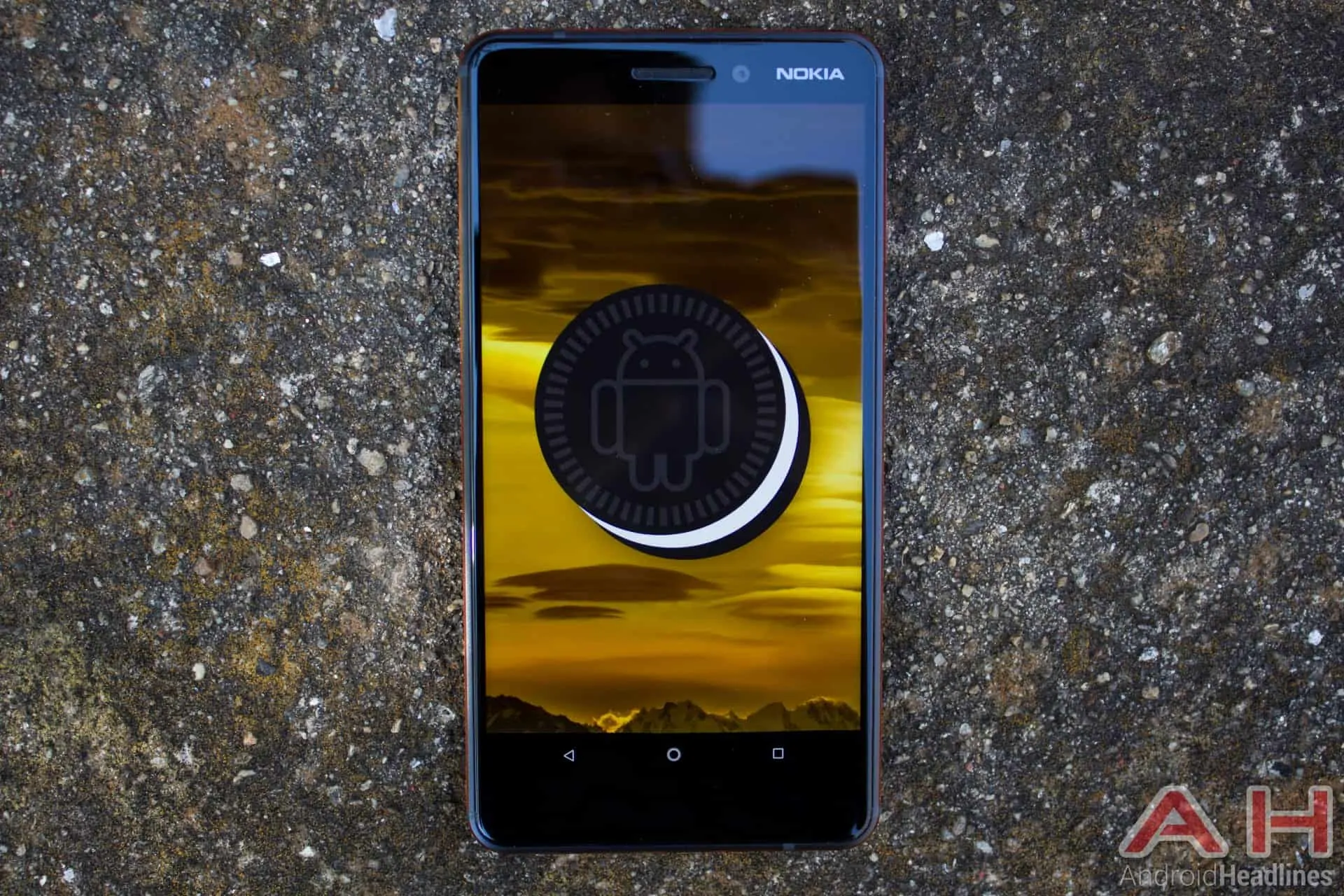
Android One is Google’s initiative to provide users with a simple, quick to update experience that’s not bogged down with bloatware or heavy skins. This last part tends to stifle update schedules and provide points of contention for developers, who have to work to fix compatibility issues that inevitably come up with feature changes or additions in an updated OS. What you’re getting is the latest version of Android, 8.1.0 with the April 1, 2018 security patch as of this review. Google handles the delivery backend for Android One phones, meaning the phone gets updated the moment Google makes the latest version available. This is a significant difference from most Android-powered phones, which often run on old versions of the OS, or more importantly, older security updates that could keep security vulnerabilities open longer than needed. While OEMs typically pack in far more features into their skins, which typically negate the need to update to major Android version updates, these security updates are certainly the most important part of being on a phone like a Google Pixel or an Android One branded phone.
This also effectively means the Nokia 6.1 looks and feels identical to the Google Pixel in most ways, including general OS styling, menus, icons, buttons, animations and even behaviors. This is the most pure version of Android you’ll get, outside of an Android Open Source Project (AOSP)-based ROM of course, and represents the most simple and basic of Android experiences without sacrificing important components like Google certification or updates. With that said, Android 8.0 Oreo still offers plenty of great quality of life features like gesture support, built in Google Play Protect, Find my Device enabled by default, Ambient display, printing support, USB-OTG, and native casting options through the Google Cast API.
Because it’s Android One and Nokia clearly has paid attention to all the necessary checkboxes, you can rest assured in the fact that everything looks and feels as it should on the Nokia 6.1. We ran into no obvious app incompatibilities, and no weird behaviors as can sometimes be the case on skinned versions of Android. Apps like Navbar Apps, which draw over the navbar at the bottom to create a colored version, sometimes don’t play nicely on certain OEMs skins, but work perfectly here. Netflix and Amazon can stream proper HD video quality since all the right certificates for DRM are here, and everything else simply worked like a charm. If it’s simple and easy you want, this is a fantastic phone to consider.
Camera

Nokia’s camera software has been brilliantly redesigned with an interface that’s both functional and beautiful, enabling quick access to regularly used features while still offering advanced features behind a quick swipe or two. From the main interface you’ll find a large shutter button at the bottom, with a dedicated record button for switching to video mode. A swipe left or right on the viewfinder will also accomplish this task. Up top are a row of icons for other quick options like toggling flash, HDR and switching between the front and rear cameras, however these icons are also the worst part of the design. There’s no way to know what these actually do until you use them, or maybe recognize the icon, because there’s no description of any kind on any of them. This makes it confusing to know what to press, to say the least.
Pro mode is simply amazing looking, and it can be invoked in one of two ways; select it from the left-hand slide-out menu, or just slide up on the shutter button. A beautiful animation rolls in the manual control wheels, and all wheels are controlled exactly like you would imagine. Lighting presets include 5 options: sunlight, cloudy, indoor, fluorescent, incandescent. A manual wheel is below, and ISO ranges from 100-3200, while shutter speed is from 1/500th of a second to 4 seconds long. The wheels will follow your finger in the screen, meaning you can reach for the wheel and drag it downward to more comfortably adjust the settings.
Nokia’s biggest problems on the 6.1 are speed and focusing issues. While the camera app is typically very fast upon a fresh reboot, there appears to be a memory leak (or other similar issue) that degrades performance significantly over time. A reboot of the phone fixed this every time for us, but having to reboot the phone when you just want to take a picture is beyond maddening, to say the least. Many times we found that launching the camera app took several seconds to initialize everything, and when the camera was finally ready, the picture taken wasn’t what was actually seen in the viewfinder. It was almost as if the camera had been taking pictures the whole time and delivered a photo that was taken, sometimes, several seconds before pressing the shutter button. There were also a number of times where the shutter button would do absolutely nothing; no picture taken, no animation that the button was clicked, just nothing at all. While a reboot fixes these issues, it’s beyond bad to see this happen at all on any phone, regardless of the price.
Focusing issues were constantly present too, often times the result of the phone not wanting to focus at all rather than focusing on the wrong thing. Many times even clicking on the viewfinder wouldn’t focus on the right spot, or focus at all for that matter, and it’s clear some work needs to go into getting focusing right. When it does get a shot taken correctly, the overall quality is generally as average as it gets, although the 16-megapixel sensor certainly gives the ability for some incredibly detailed shots in good lighting conditions. 1.0-micron pixel size is tiny by any measurement, and means the low light abilities of the Nokia 6.1 are going to be lacking. This also limits dynamic range quite a bit, resulting in photos that are often times too light or too dark if there’s any kind of harsh shadows or super bright light sources.
There aren’t many extra modes outside of auto and pro, with a normal panorama mode available, as well as a split-camera mode too. This split camera mode is fantastic, to say the least, and will take a photo or video with both front and rear cameras at the same time. Nokia offers a simple split screen mode that cuts the screen in two and places cropped views from the front and rear cameras on opposite sides, or a more advanced floating frame that places the front-facing camera’s full view on top of the rear camera’s full view, with the ability to move the floating window around on the screen. This is great for getting selfie shots of an area without having to worry about blocking the whole shot with your body, or probably better yet, messing up the shot by focusing only on the people or the environment around.
Video recording is generally average as well, but offers 4K recording, a function some phones in this category still don’t have. On top of this, Nokia touts the ability for the phone to record in true stereo, with proper codecs and support to deliver this stereo audio in the finalized video. Plenty of phones don’t record in proper spatial stereo, but Nokia’s dual-microphone setup helps record spatial audio more accurately, and in general does a good job. There’s no optical or digital stabilization for video though, so while quality itself is pretty good, videos will be shaky if there’s any movement at all. Check out the gallery below for all the pictures and video we took during the review.
The Good
Ultra-solid build
Sleek looks
3.5mm audio jack
Android One means timely, regular updates
Simple, easy functionality and high compatibility with Android apps and services
Wide range of carrier compatibility
The Bad
Large bezels
Camera is literally unusable quite often
Conclusion

The Nokia 6.1 is a very affordable phone when compared to more established Android brands out there, and while there are some serious setbacks for Nokia in the camera department, the rest of the phone ranges from average to excellent. The design of the phone isn’t just stunning to look at, it’s also a joy to hold and use, and while the screen uses a dated looking aspect ratio with some pretty large bezels for 2018, the performance of the phone overall, coupled with the simplicity and quick updating of Android One make this an excellent upper-entry-level phone to consider. While it certainly would be nice to see a further discounted price, as Amazon did last year, $269 isn’t exactly a lot of money for a phone that’s more than capable of anything you could throw at it, and has plenty of great features too. Just make sure you don’t care much about the camera portion of the phone, because it’ll most certainly drive anyone mad.
Buy the Nokia 6.1 on Amazon




